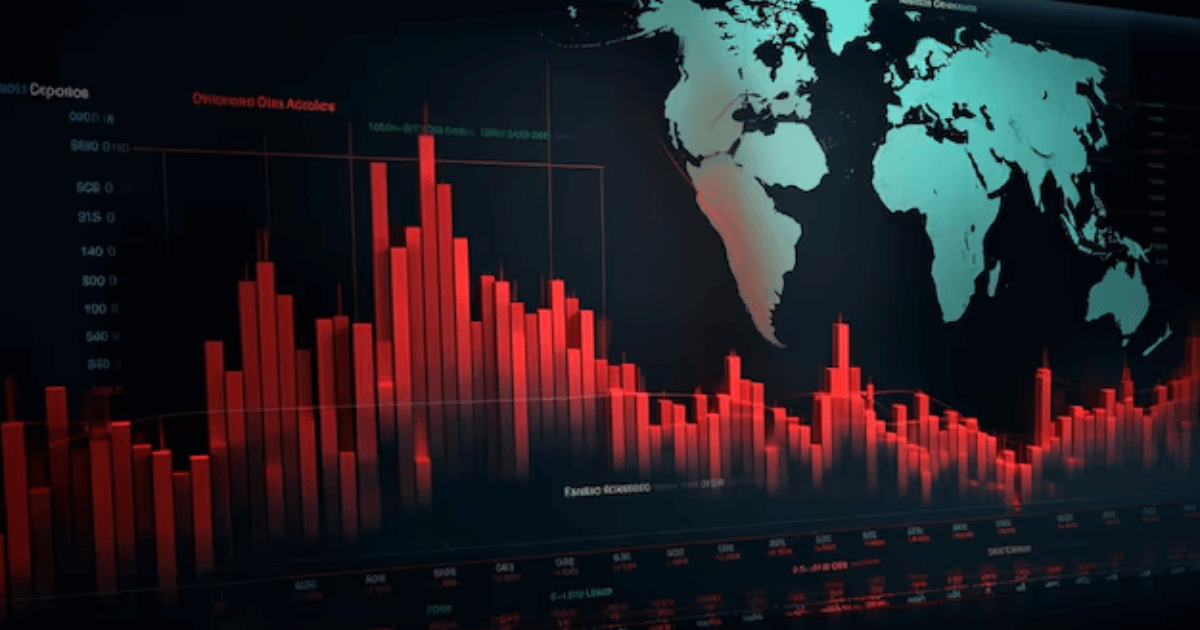
Trading is a risk-reward proposition. No matter what strategy you use or the broker you trade with, there’s always the risk of losing your invested capital.
This guide isn’t here to scare you, actually quite the opposite. The purpose of this article is about getting you comfortable with trading risk, and understanding it on a deeper level through the concept of the risk-reward ratio (RR ratio).
Let’s get into it.
At its core, the risk-reward ratio is a tool that helps traders assess potential profits against potential losses before entering any trade. It’s a simple calculation, but the implications for your trading decisions are huge.
The ratio compares the amount of risk (how much you stand to lose) to the potential reward (how much you stand to gain).
For example, if you're risking $100 to potentially make $300, your risk-reward ratio is 1:3. This means you're willing to risk $1 for every $3 of potential profit.
Why does this matter? Because it gives you a framework to evaluate whether a trade is worth taking, regardless of how tempting it may appear on the surface. And it’s what every top trader considers before they enter any trade.
One common mistake that beginner traders make is focusing only on the potential reward. They get drawn in by the possibility of large profits and neglect to calculate the potential downside.
But traders that have been in the game for a while know that consistently successful trading isn’t just about maximizing gains—it’s also about managing and minimizing losses.
In short, make sure your winners are big, and your losers aren’t.
Using a strong risk-reward ratio can be the difference between a sustainable trading strategy and a high-risk gamble. In fact, many successful traders aim for a minimum risk-reward ratio of 1:2, 1:3, or even higher, ensuring that when they do win, the rewards outweigh the occasional losses.
Calculating the risk-reward ratio is fairly straightforward. Here's a simple step-by-step process to help.
🔺 Identify your entry point: This is the price at which you plan to enter the market.
🔺 Set your stop-loss: Determine the maximum amount of loss you're willing to tolerate. Your stop-loss is the price point where you’ll exit the trade to cut your losses.
🔺 Establish your target price: This is the price at which you plan to take profits.
🔺 Calculate the ratio: To do this, subtract the entry price from the target price to determine your potential reward, and subtract the stop-loss from the entry price to determine your risk. Then, divide the reward by the risk.
Let’s break it down with an example:
Entry price: $50
Stop-loss: $45
Target price: $60
In this scenario, the risk is $5 (50 - 45), and the reward is $10 (60 - 50). So, the risk-reward ratio is 1:2. This means for every $1 you risk, you stand to gain $2.
Now that you understand how to calculate the ratio, the next step is incorporating it into your trading strategy. Start by setting clear guidelines for the minimum ratio you’re willing to accept for each trade. If the risk outweighs the reward, it’s likely a trade you should avoid.
Remember, trading is not about being right all the time—it’s about making the right choices over time. Even if you only win half of your trades, a well-managed risk-reward ratio can still allow you to end up profitable.
For instance, if you set a 1:3 ratio, you could lose twice as often as you win and still break even. That’s the beauty of mastering the risk-reward equation.
Next time you’re ready to place a trade, don’t hit buy or sell before you’ve thought out your risk-reward ratio. It not only helps you manage risk, but it also encourages discipline and a more strategic approach to trading.
By consistently applying a favorable ratio, you can minimize losses, maximize gains, and ensure that your trading strategy is built for the long haul.
Hopefully you’ll think about trading risk differently now. Don’t let it scare you away from the market. Instead, let the concept of risk guide you to make smarter, more informed trading decisions.
Sign up to get the inside scoop on today’s biggest stories in markets, finance, and business.
By clicking “Sign Up”, you accept our Terms of Service and Privacy Policy. You can opt-out at any time by visiting our Preferences page or by clicking "unsubscribe" at the bottom of the email.
Leave a Reply